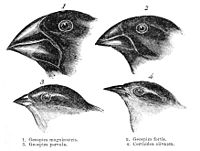
Photo from wikipedia
To evaluate the association of serum vitamin D levels with chronic rhinosinusitis (CRS) in population residing at high altitudes and to assess its correlation with severity of CRS. A prospective… Click to show full abstract
To evaluate the association of serum vitamin D levels with chronic rhinosinusitis (CRS) in population residing at high altitudes and to assess its correlation with severity of CRS. A prospective case–control study comparing vitamin D in 60 cases (30 with nasal polyposis and 30 without) and 31 controls was carried out. Correlation of vitamin D with severity of disease (Lund Mackay CT/LMS and endoscopic Lund Kennedy scores/LKS) was assessed using Spearman’s correlation (rs). Logistic regression analysis using vitamin D and confounding factors (Age and gender only, as other variables like smoking, bronchial asthma were exclusion criteria) as dependent and CRS (presence/absence) as independent variable, was also conducted. A significantly lower vitamin D levels were found in CRS (14.60 ± 7.68 ng/ml), CRSwNP (13.70 ± 7.88 ng/ml) and CRSsNP (15.49 ± 7.50 ng/ml), when compared to controls (29.36 ± 7.49 ng/ml). Non allergic cases when compared with controls, showed significantly lower vitamin D levels (13.91 ± 6.78 compared to 29.36 ± 7.49 ng/ml). LMS and LKS in CRS showed a moderate correlation with vitamin D (rs: − 0.604 for LMS, rs: − 0.595 for LKS). Logistic regression analysis showed vitamin D levels (Odds-Ratio 0.783) to be an independent predictive factor of CRS. A significantly lower vitamin D level is associated with CRS, irrespective of presence or absence of nasal polyposis in adults residing at high altitudes. Vitamin D is an independent predictive factor for CRS. There is an inverse moderate correlation of severity of CRS with vitamin D.
Journal Title: European Archives of Oto-Rhino-Laryngology
Year Published: 2020
Link to full text (if available)
Share on Social Media: Sign Up to like & get
recommendations!